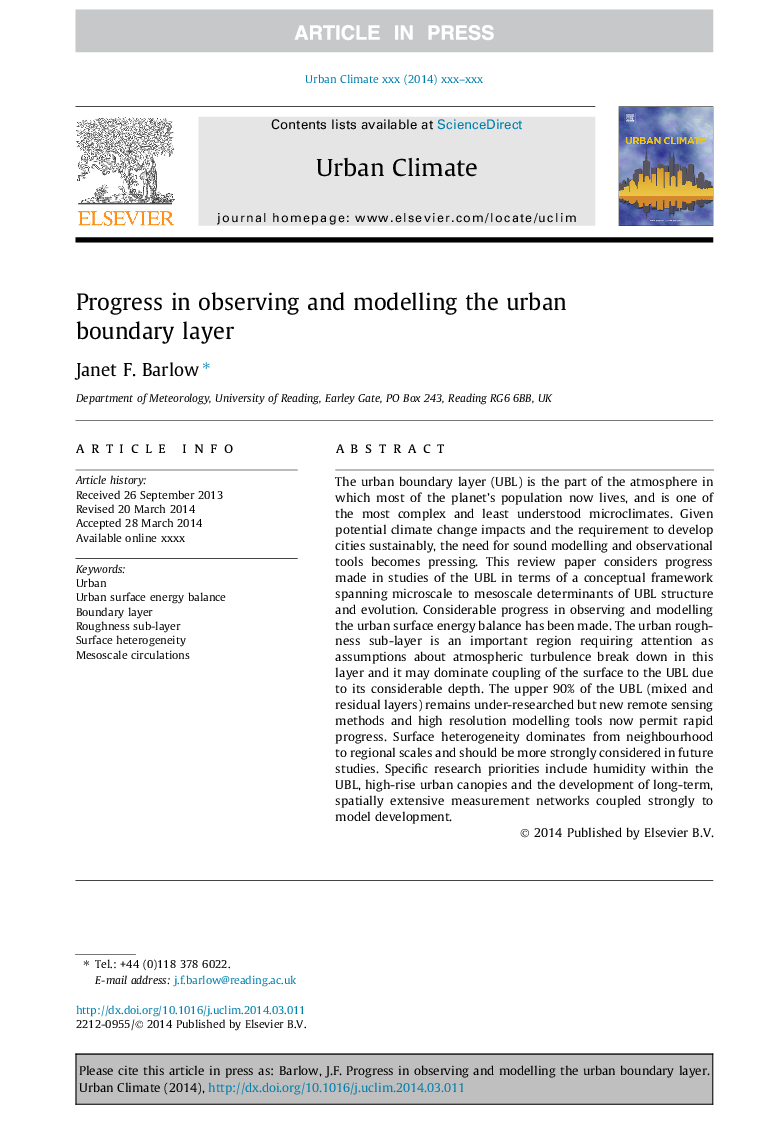| Article ID | Journal | Published Year | Pages | File Type |
|---|---|---|---|---|
| 10260289 | Urban Climate | 2014 | 25 Pages |
Abstract
The urban boundary layer (UBL) is the part of the atmosphere in which most of the planet's population now lives, and is one of the most complex and least understood microclimates. Given potential climate change impacts and the requirement to develop cities sustainably, the need for sound modelling and observational tools becomes pressing. This review paper considers progress made in studies of the UBL in terms of a conceptual framework spanning microscale to mesoscale determinants of UBL structure and evolution. Considerable progress in observing and modelling the urban surface energy balance has been made. The urban roughness sub-layer is an important region requiring attention as assumptions about atmospheric turbulence break down in this layer and it may dominate coupling of the surface to the UBL due to its considerable depth. The upper 90% of the UBL (mixed and residual layers) remains under-researched but new remote sensing methods and high resolution modelling tools now permit rapid progress. Surface heterogeneity dominates from neighbourhood to regional scales and should be more strongly considered in future studies. Specific research priorities include humidity within the UBL, high-rise urban canopies and the development of long-term, spatially extensive measurement networks coupled strongly to model development.
Related Topics
Physical Sciences and Engineering
Earth and Planetary Sciences
Earth and Planetary Sciences (General)
Authors
Janet F. Barlow,
